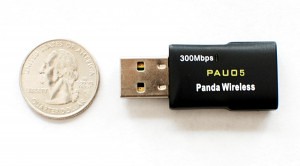I bought a new USB wireless adapter once upon a time. Don’t laugh, I'm not a complete Luddite: the desktop computer didn’t have an internal radio and the house wasn't wired for Ethernet, so a fifteen-dollar USB plugin fulfilled a need. Whatever the case, it’s a compact device that is compatible with all kinds of operating systems and also supports all the common wireless protocols. Like darned near everything in the world these days, it was made in China; sold by a company called Panda. I have no complaints: it worked as advertised and it was (reasonably) easy to install. It was a lot faster than the old one it replaces, too.
I have to say that even my level of fluency failed there…
We’ve all seen examples of instructions that read like those. They can be quite frustrating. They may leave a bad taste in our mouths for the product, the maker, even the country. Most of all, they look unprofessional and give a buyer the impression that the manufacturer doesn’t care. That may be right, but I doubt any manufacturer wants buyers to realize that inconvenient truth.
Don’t get me wrong: I am not one of the people who demands that everyone speak English. I have immense respect for anyone who is even reasonably fluent in a second language, because heaven knows I can barely find a bathroom or order a beer in any other language. OK, to be honest, I’ve made it a practice to learn “beer” and “bathroom” in the local language. But how much trouble can it be to find a native speaker who can read through your customer documents to clean up language errors like that?
Come to think of it, I’m available. If you have brochures, instructions, technical documents or a user’s manual in Chinglish, Spanglish or some other mashup language, give me a call: I may be able to edit those incomprehensible instructions for you…
That installation part is why I’m here, though. The adapter is plug-and-play with Windows 10, but I installed it on a Windows 7 computer. That meant I had to use the installation guide. It’s a good thing I worked six years for a company with an office in Beijing, because I can now read the Mandarin-English mashup language people call “Chinglish.” If I couldn't, I might not have been able to finish the installation, or at least I'd have been pretty puzzled. Here's are some samples of those instructions (transcribed from the user’s manual):"Once the wireless USB adapter be plugged into an USB port, the flowing message will appear on screen." "Click the ‘Install’ to confirm the installation, there shows the installation progress." |
I worked for several years at a software company whose Beijing-based programmers embedded messages like “Exception Happens” in their code, so wording like that doesn't bother me much: you might say I’m fairly fluent in the language. Not everyone is, though, and even I have difficulty puzzling through some of the more convoluted constructions. Years ago, I bought a bicycle trainer manufactured by Minoura. I still remember (with reluctant admiration) the convoluted assembly instructions, which you can find in an online version of the manual. I always thought it looked as though it had been translated from the original Mandarin to English using Google Translate, with a brief stopover in a third language – Arabic, maybe. Here’s what I mean:"We suggest you do not need to move the left side coupling away so much. It should be fine to move by the center of its length, but it needs to be adjusted depends on the hub width." |
We’ve all seen examples of instructions that read like those. They can be quite frustrating. They may leave a bad taste in our mouths for the product, the maker, even the country. Most of all, they look unprofessional and give a buyer the impression that the manufacturer doesn’t care. That may be right, but I doubt any manufacturer wants buyers to realize that inconvenient truth.
Don’t get me wrong: I am not one of the people who demands that everyone speak English. I have immense respect for anyone who is even reasonably fluent in a second language, because heaven knows I can barely find a bathroom or order a beer in any other language. OK, to be honest, I’ve made it a practice to learn “beer” and “bathroom” in the local language. But how much trouble can it be to find a native speaker who can read through your customer documents to clean up language errors like that?
Come to think of it, I’m available. If you have brochures, instructions, technical documents or a user’s manual in Chinglish, Spanglish or some other mashup language, give me a call: I may be able to edit those incomprehensible instructions for you…
copyright © 2016 scmrak

No comments:
Post a Comment